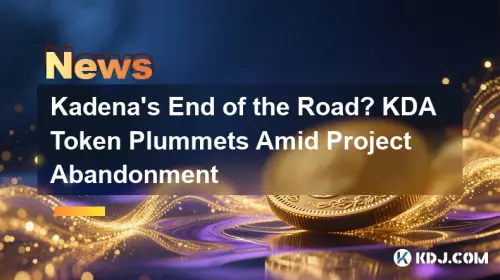A look at the shifting landscape of stablecoins in Hong Kong, featuring Ant Group's pause and the broader implications for digital asset regulation.

The world of stablecoins is never dull, especially when you throw in players like Ant Group and a location as dynamic as Hong Kong. Recent developments have put a spotlight on the delicate balance between innovation and regulation in the digital finance space. Let's dive in!
A Hong Kong Stablecoin Dream Deferred?
Hong Kong's ambition to become a regional crypto hub hit a snag when Ant Group and JD.com paused their stablecoin pilot programs. This wasn't a local decision; it came straight from Beijing. The People's Bank of China (PBOC) and the Cyberspace Administration of China (CAC) stepped in, reflecting a growing caution about digital assets not directly controlled by the state.
The Regulatory Tightrope
Hong Kong had actually made strides in creating a clear licensing regime for fiat-backed stablecoin issuers. The goal was to attract participants and foster a thriving crypto environment. Ant Group and JD.com had even expressed interest in joining the pilot program. However, Beijing's intervention underscores the geopolitical tensions at play, with central control trumping regional ambition. This move poses a significant challenge to Hong Kong's autonomy in financial regulation.
Stablecoins: What's the Big Deal?
Stablecoins are cryptocurrencies designed to maintain a stable value, typically pegged to a fiat currency like the U.S. dollar. They're crucial for crypto traders, allowing them to move funds between tokens easily and providing liquidity to the broader market. Hong Kong's new regime requires stablecoin issuers to obtain a license from the Hong Kong Monetary Authority (HKMA), even for those backed by Hong Kong dollars. This highlights the seriousness with which regulators are approaching this asset class.
Meanwhile, in Japan...
While Hong Kong faces regulatory hurdles, Japan is forging ahead. Major Japanese banks, including Mitsubishi UFJ Financial Group (MFUG), Sumitomo Mitsui Financial Group (SMFG), and Mizuho Financial Group, are joining forces to launch a yen-backed stablecoin. This move follows the regulatory approval of JPYC, a fintech company, for its yen-backed stablecoin. Japan's approach focuses on modernizing payment rails and enhancing the efficiency of corporate settlements.
The Broader Crypto Landscape
The crypto market is showing signs of resilience, with Bitcoin holding strong and Ethereum seeing institutional inflows. Binance Coin (BNB) is also gaining momentum, driven by network expansion and DeFi activity. Interestingly, meme coins like AlphaPepe are contributing to on-chain activity, demonstrating the continued influence of retail investors in the crypto space.
A Personal Take
The situation in Hong Kong is a reminder that the path to mainstream crypto adoption is not always smooth. While innovation is essential, regulators are understandably concerned about maintaining control and stability. The contrasting approaches in Hong Kong and Japan highlight the diverse regulatory landscapes shaping the future of digital finance. It's a complex puzzle, but one thing is clear: stablecoins are here to stay, and their role in the financial system will only continue to grow.
The Bottom Line
So, what does all this mean? The journey of stablecoins in Hong Kong is a bit like a rollercoaster – full of ups, downs, and unexpected turns. But hey, that's what makes the world of crypto so darn exciting, right? Keep your eyes peeled, folks, because this story is far from over!













































































